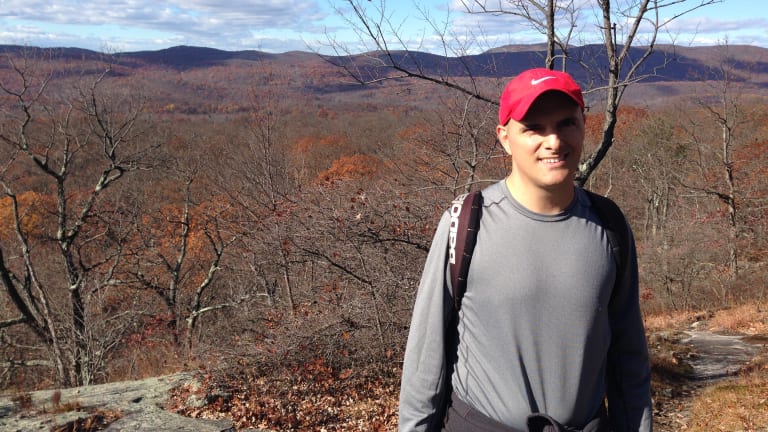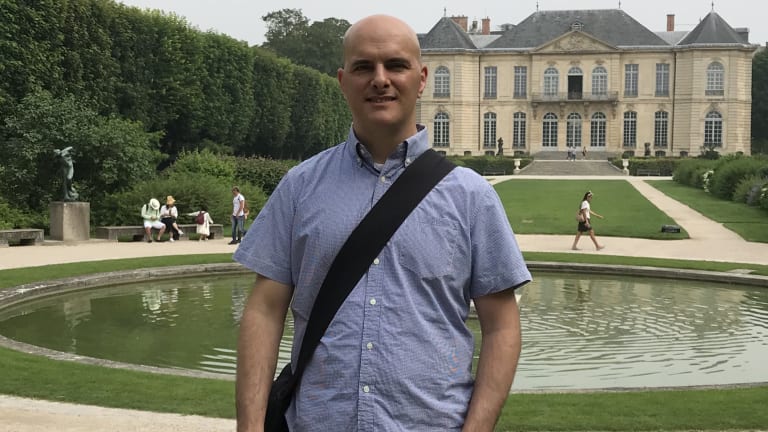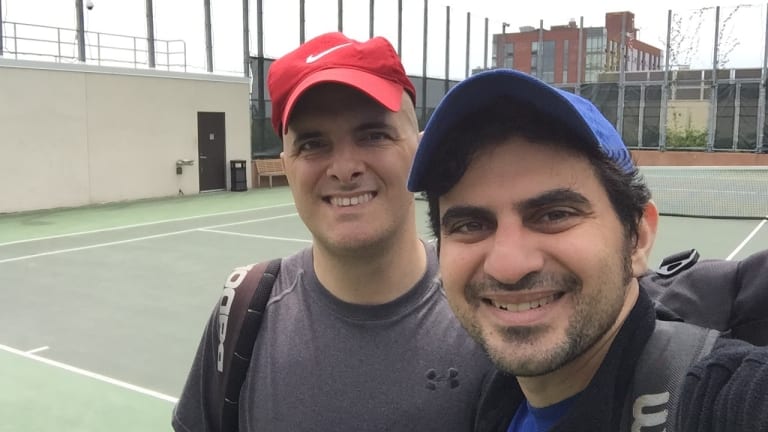Farewell to the “Neighborhood Baby”: Remembering Tom Perrotta
By Peter Bodo Jan 11, 2021Rafael Nadal, ambassador for the Saudi Tennis Federation, returns to Next Gen ATP Finals
By Ed McGrogan Dec 21, 2025Learner Tien looks for revenge, in two ways, in the Next Gen ATP Finals title match
By Ed McGrogan Dec 20, 2025Tenerife set to once again be a standout stop on the 2026 ATP Challenger Tour
By Florian Heer Dec 20, 2025"One last push": Stan Wawrinka confirms 2026 will be final season
By Associated Press Dec 20, 2025Nishesh Basavareddy advances at Next Gen Finals with Gilles Cervara in his corner
By Stephanie Livaudais Dec 19, 2025Naomi Osaka is leaving the sports agency she co-founded
By TENNIS.com Dec 19, 2025ATP Tour sets out safeguarding policy with training for players and potential for bans
By Associated Press Dec 19, 2025Coaching carousel continues: Grigor Dimitrov, Daniel Vallverdu split for second time
By TENNIS.com Dec 19, 2025Chinese tennis player banned 12 years, fined $110,000 for match-fixing spree
By Associated Press Dec 19, 2025Farewell to the “Neighborhood Baby”: Remembering Tom Perrotta
The seemingly pro forma endorsement of Tom’s warm-hearted nature, explains so much about him, and why losing him at just 44 has been a blow felt deeply by so many.
Published Jan 11, 2021
Advertising
Tom Perrotta’s career as the Wall Street Journal’s tennis expert ended far too abruptly when he finally lost a ferocious, four-year battle with brain cancer. As hopeful tennis pros worldwide prepared for the fresh start of 2021, Tom passed away quietly on the morning of January 6 at his home in Brooklyn, N.Y., his wife Rachel Kane and sons Paul and Sean nearby.
Perrotta will chronicle the small-scale tragedies and triumphs of athletics no more, but he did land one astonishing blow against the disease before he left us, a “farewell” column that appeared in the Journal in late November.
Just how Tom managed to produce that column at a time when even his ability to speak coherently had withered away will remain an enduring mystery, but no surprise. During his tenure at Tennis Magazine and, later, in his heyday as the Journal’s chief tennis correspondent, acts of journalistic bravado were Tom’s stock in trade. He routinely borrowed a quality from the great athletes he so often wrote so well about: He made an extremely difficult task look easy.
Jason Gay, Tom’s friend and colleague at the WSJ, wrote in his own eulogy: “Tom was the Journal’s top writer at all the major tennis events, which meant that when the match ended—the moment when Federer raised his arms in triumph, or Rafael Nadal rolled to the red dirt in disbelief—it was Tom’s job to immediately render what happened and hit the send button, within a few minutes. There is pressure in that job. People can freak out. It isn’t uncommon, at a big sporting event, to see a reporter comically lose it on deadline. Tom didn’t lose it. He was unflappable, kind to colleagues and competitors, even when crunching a deadline.”
It’s that last bit, the seemingly pro forma endorsement of Tom’s warm-hearted nature, that explains so much about him, and why losing him at just 44 has been a blow felt deeply by so many. Rarely has someone so well-respected and talented also been so warmly embraced. Speaking for scores of his colleagues, Chris Clarey of the New York Times tweeted, “It would have been hard to lose @TomPerrotta at any age. He was a generous colleague, a driven & gifted sportswriter, a proud family man and, in a tough business, a friend. Farewell dearest Tom.”

Farewell to the “Neighborhood Baby”: Remembering Tom Perrotta
Advertising
Photos from Rachel Kane and Carl Bialik
Tom’s passing was preordained four years ago. Many of us knew it. It should have come as no surprise when it finally happened. Yet it did. That final moment is a paradigm-shifter, as someone there suddenly becomes not-there. For four years, you periodically met, talked about the progress of the disease, your families, Roger Federer. Parting, you hugged, muttering “I love you, man” as you fought back tears. Now even that melancholy exercise is denied.
So you catalog and seek out memories, in a semi-panic that you’ll forget them. There was that night in Miami, when the two of you sat in the cavernous courtyard of that hotel straight out of Star Wars, drinking whiskey, smoking cigarettes, easing open the doors that guard your true selves as a soft mist glazed the enormous fronds and dawn beckoned. You can describe that experience, but who really cares?
You decide to summon up images of your friend at the peak of health, when his energy was almost a palpable thing. Unfortunately, it takes you back to the early years of your friendship, when he favored that goofy, fisherman’s bucket hat. What were you thinking, TP?
In your mind’s eye, you see that bright patch of white cotton at Tom’s throat. He always wore a t-shirt, even in the summer, even under an expensive, crisply-laundered short-sleeved summer shirt. Tom was fastidious alright (his pal Simon Cambers used to tease him remorselessly about his omni-present hand sanitizer in the pre-Covid days), but you also thought the t-shirt was a nod to the working-class roots he would never disavow.
You remember looking out the window of Wimbledon’s media center to see the magnificent, gleaming dome of Tom’s head bobbing along on a crowded pathway. You remember that his fingers were extremely long and delicate, and ran lightly across the strings of a guitar.
It’s important to hold onto these details because they will give shape, form and color to the abstraction so precisely articulated by another friend, Jon Wertheim:
“Tom was a lovely man who had the hard edge of a journalist, but also the softness of the most gentle of souls. He loved his family. He loved Rhode Island. He loved his friends. He loved tennis. He hated bullshit. He hated smarm. And for a reason I could never figure out he had a hate list of words that included “massive,” and, “what's more.”
Hated “massive.” That’s a keeper.
TP liked Merrell hikers and Kit-Kat candy bars. He turned you on to Tyler Childers. But was Tom always bald? Was he ever afraid of the dark? Did he ever try surfing or want a dog? In the end you realize that what you don’t know about someone will always amount to a lot more than what you do.

Farewell to the “Neighborhood Baby”: Remembering Tom Perrotta
Advertising
Tom was the last of six Perrotta children, and the youngest by nine years, born to Leo and Norma Perrotta in North Providence, R.I. A largely working-class suburb, N. Providence retained a grip on Tom’s heart that even the seductive wonders of Paris, Tokyo and Melbourne could not pry free.
Because he was so much younger than his siblings, and Norma already had her hands full running the house, a sister, Lisa, became the “designated mommy.” Twelve years older than Tom, she shared those duties with many others.
“Tom became the ‘Neighborhood Baby,’” Lisa—now Lisa Hanch—told me. “He always had a lot of eyes watching him growing up.”
Leo, Tom’s father, was a contractor who built the house in which the posse of Perrotta kids grew up. Tom’s zeal for debate, which would earn him a measure of renown later in life, was established at the family dinner table, where he learned early that he had to fight to make his voice heard among all those joshing, squabbling, jostling older siblings—all of whom knew many things that he did not.
“We were a big loud family to begin with, and with so many of us you had to be really persistent if you wanted to be heard,” Hanch said. “‘Persistent’ is a great word to describe Tom. Even as a child, he was persistent beyond anybody’s patience. If we were arguing about something we were always, like, ‘Oh my God, Tom, let it go!’ But he never did.”
For years, Tom would only eat the “three Ps” (pizza, plain pasta, peanut butter). Hanch mentioned other quirks of childhood. His glass at breakfast had to be turned in a certain direction, the stuffed animals on his bed had to be arranged in a certain pattern. He developed elaborate good-morning and good-night rituals. And when he got older and went into the shower, Hanch said, “It was like, ‘Oh, here we go!’ The shower would be tied up for hours.”
All along, Tom also was animated by a robust appetite for knowledge. He craved factual accuracy, and quasi-scientific precision—all inclinations that were woven into his being as a journalist long before he even knew he was one.
Leo Perrotta had always hoped that at least one of his children would remain at or near home, follow his footsteps into the contracting business. That dream flickered out when Tom enrolled in Northwestern University’s famed school of journalism. But Leo’s youngest child would become a craftsman of comparable skills in his own right, his verbs trusses engineered to withstand any stress or scrutiny, clauses that fit with perfectly mitered corners.
Chris Clarey, the New York Times tennis correspondent, always admired Tom’s seamless, streamlined writing (you can find most of Tom’s work here). He told me, “Tom was amazingly readable, yet the story was always complex.”
“Every detail in his stories had to be correct,” Carl Bialik, a former WSJ colleague and one of Tom’s closest friends, told me. “He would check every way he could with every moment he had until his story ran (was published). And the essence of the story had to be true, too. He'd doubt it and check it constantly—with any evidence he could muster, including data he'd dig deep to unearth.”
Tom was the kind of meticulous writer who could give editors the night terrors, yet all of them enjoyed working with him.
Jim Chairusmi, who handled a lot of Tom’s copy at the WSJ editorial desk, told me via email that Tom was fast, clear and concise. He was “as tenacious as Rafa in a rally” when he fought for his wording or a story angle, he was always open to tweaks and suggested improvements. Even after a story was published, Tom would email Chairusmi if he found even a space out of place.
According to another WSJ editor, Adam Thompson, Tom was a “deadline virtuoso” with a penchant for coming up with “gorgeous ledes” (opening paragraphs) that put the feats of his subjects into crystal perspective. “Some writers take forever in these situations,” Thompson said. “Never with him.”
Tom’s reputation among his peers was impeccable, his ethics exemplary, his advice sought. But he never forgot that his colleagues were competitors, and he loved it. He was as eager to beat his peers to a story as he was delighted to break bread with them later, which led to some amusing outcomes.
Simon Cambers, a British correspondent for Reuters, stayed with the Perrottas during several US Opens, a full-fledged part of the family. The men would travel back and forth together, talking shop. In 2016, Cambers remembers, he and Tom were dropping hints about a hot, “exclusive” story each was working on. As the days rolled by, their banter about certain recurring subjects became increasingly obtuse. It was awkward. Finally, when each man published, the reason for all the evasions, became clear. They had been working on the same story.

Farewell to the “Neighborhood Baby”: Remembering Tom Perrotta
Advertising
Tom, Carl and tennis.
Tom Perrotta grew up playing tennis. One of the signature obsessions of his adolescence was becoming good enough to beat his older brother, Michael, who was a superb athlete and apparently suffered Tom’s serial onslaughts with good cheer. After college, Tom paid his journalistic dues at, among other places, a small southern newspaper and the New York Law Journal but, at the dawn of the Federer-Nadal era, he decided to go all in on tennis.
It was easy to see why the tennis environment appealed to one who had been the “neighborhood baby.” Although the game is a moveable feast with no official home boundaries, it features many of the same things as a neighborhood: a sense of community, a familiar cast of characters, shared values and unique features of language.
Tom broke into the profession at a time of tremendous media contraction, especially in print, but his persistence paid off. Once taken on by the WSJ, he quickly assumed a role that colleague Gay describes as “outsized,” a “gargantuan amount of work.”
Tom reveled in it.
“He was driven and gifted and it never stopped,” Clarey, the Times correspondent, said. “He was a complete pro, but it was often hard to get him to calm down about a story, even after the deadline was over. It might be time for a shared dinner and a glass of wine, but Tom would still be trying to de-construct the work, thinking of what he might have missed or left out.”
An ever larger portion of Tom’s life revolved around tennis and the friends he made in the sport. The sheer volume of post-mortem tributes posted by tennis people after his death took Tom’s own family by surprise.
“I just had no idea how many people he knew, and who had such fond memories of him, and not just in passing,” Hanch said. “I was taken aback. I think we all were.”
The torrent of sympathy told of a man loved by his colleagues, confirming the rider Adam Thompson, the WSJ editor, added to his comments: “None of that [professional praise] takes into account what a lovely person Tom was. So ego-free despite his talent, so kind, funny, loyal, passionate about tennis—and plenty else.”
Bonnie Ford, long a senior writer at ESPN.com, will miss Tom’s laughter. She loved how Tom never allowed the work to subsume his being.
“He was game, whether it was to get up early to play, or to steal away from the Australian Open to go see the marsupials at the Melbourne Zoo.”
Jon Levey, an excellent tennis player who worked with Tom in the early days at Tennis Magazine, remembers how Tom recruited him to play in a hardscrabble rec league based in New York’s Harlem Armory.
“Whenever I was up against a local hero who had a heavy fan base skewed in his favor, I could always count on Tom to be the lone applause on my behalf,” Levey said. “Even with the late hour and his long commute back to Brooklyn, Tom would stick around and humor me with a post-match autopsy.”
Bialik said, “I knew Tom as a freelancer who was the consummate colleague to everyone. He held himself to the highest standards—while simultaneously showing generosity and kindness to people he could have viewed only as his competitors.”
All that can obscure TP’s own zest for competition. The man loved a good fight. When author and sometime tennis rival Andrew Friedman visited him last November, Tom was barely able to walk, even with the aid of a cane. His speech was garbled, unintelligible, his comprehension questionable. Near the end, TP sometimes turned a searching gaze on his companion, as if trying to find the person hidden from him by the disease, trying to find you.
It was a painful, awkward stroll for Friedman that day, until Tom abruptly stopped and smiled, seemingly in full recognition of his friend. He found words: “Maybe you could beat me now. Before, no. But now. . . yes.”
A beat later, Tom’s face lit up in a smile as he revised his opinion: “Now. . . Maybe.”
“I cracked up.” Friedman told me. “So did Tom. About ten minutes later, I said goodbye to him for what turned out to be the last time.”